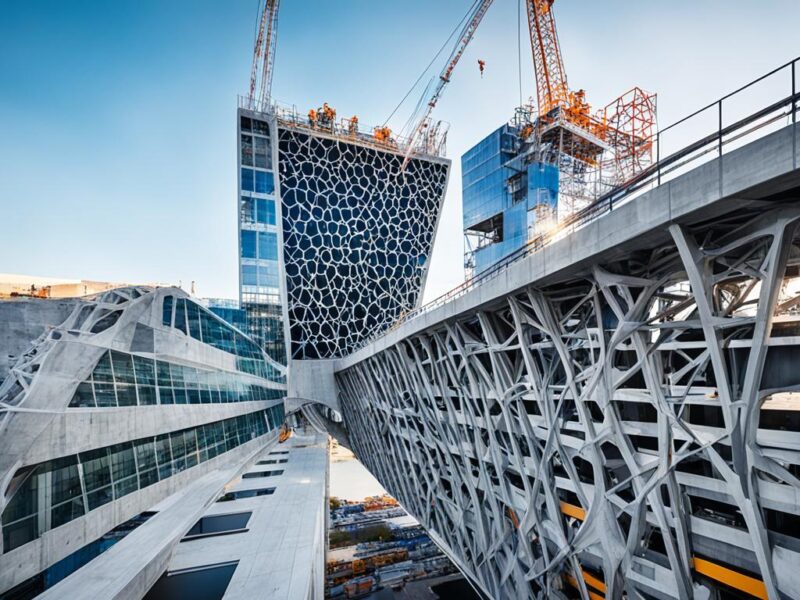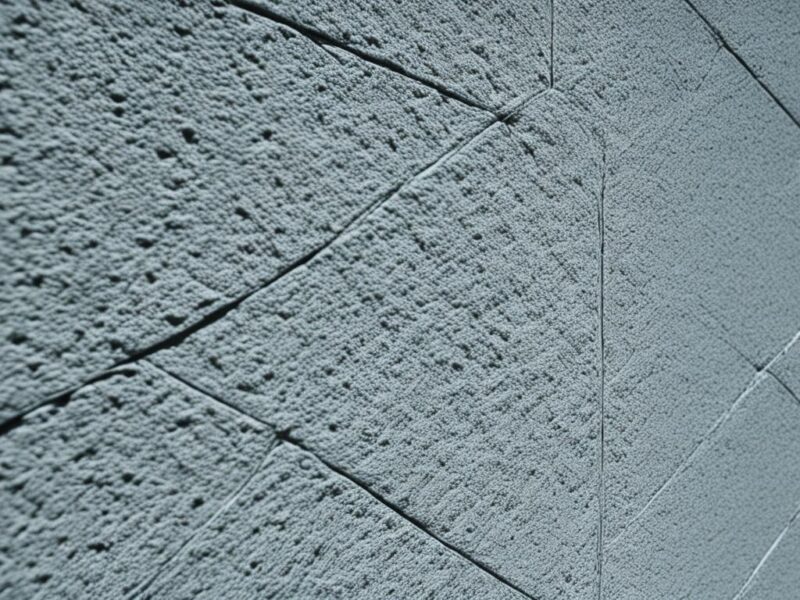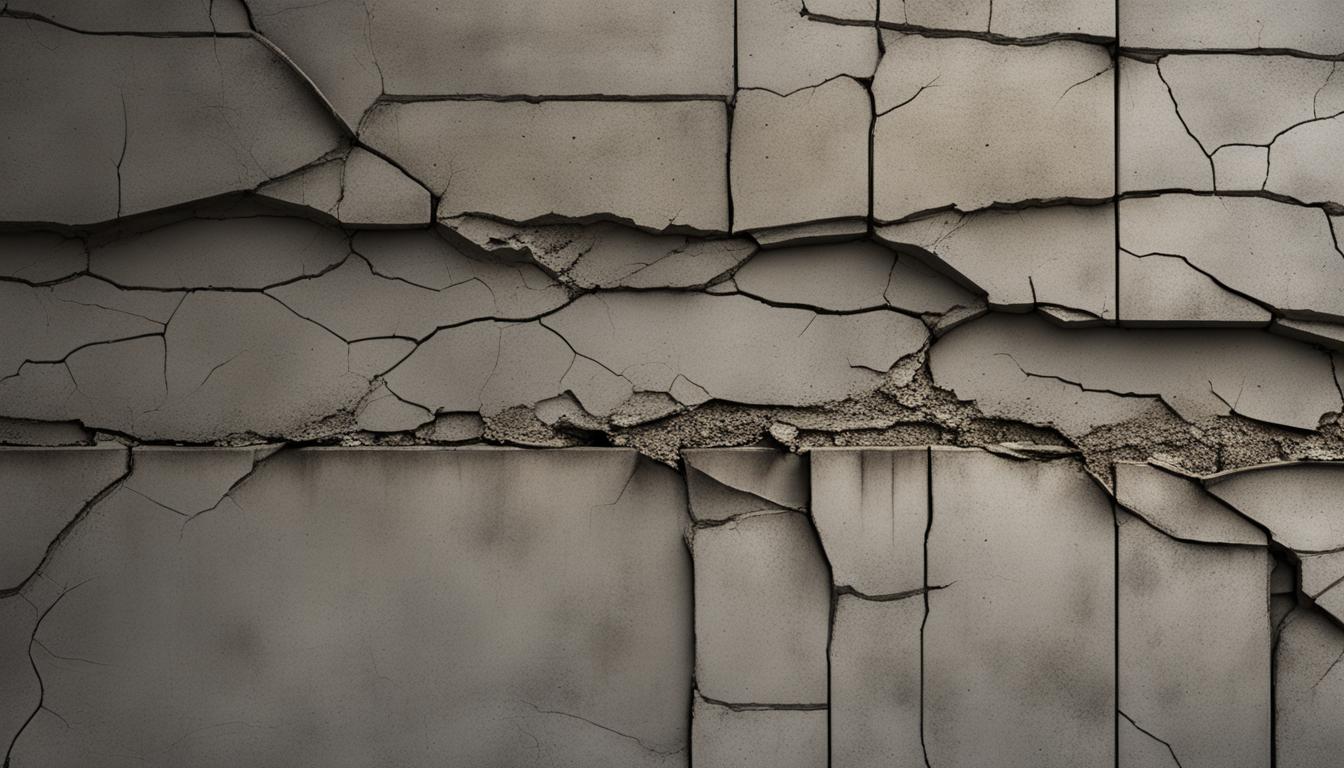
Self-Healing Concrete: Revolutionizing Construction
Welcome to Modular Pulse, your trusted source for the latest developments in construction technology. In today’s edition, we delve into the fascinating world of self-healing concrete and its impact on sustainable construction. This innovative building material has the potential to transform the construction industry by enabling autonomous repair and creating durable infrastructure that stands the test of time.
Key Takeaways:
- Self-healing concrete is an exciting breakthrough that allows for autonomous repair of cracks and imperfections in construction projects.
- By incorporating innovative technologies such as bacterial spores and encapsulated healing agents, self-healing concrete improves the longevity and safety of structures.
- Not only does self-healing concrete reduce the need for maintenance, it also has a positive impact on the environment by minimizing the carbon footprint associated with traditional concrete production.
- Applications for self-healing concrete span across various sectors, including infrastructure, building construction, coastal defenses, industrial applications, and even military uses.
- The future of self-healing concrete looks promising, with ongoing research and development efforts focused on enhancing its performance and advancing its application.
Want to stay informed about the latest advancements in construction technology? Subscribe to our newsletter for free and be the first to receive industry updates, insights, and more!
Understanding Self-Healing Concrete
Self-healing concrete is a remarkable innovation in the field of engineered concrete. This advanced material has the extraordinary ability to repair its own cracks and imperfections, ensuring the durability and longevity of structures.
Self-healing concrete incorporates various components that facilitate its repair mechanism. These include bacterial spores, microfibers, or encapsulated healing agents, which remain dormant within the concrete mixture. When cracks occur, the embedded healing agents are triggered by water ingress and react to fill in the gaps, effectively restoring the structural integrity of the concrete.
This innovative approach to concrete design has revolutionized construction practices by providing autonomous repair capabilities. By leveraging the power of nature-inspired technologies, such as bacterial spores and encapsulated healing agents, self-healing concrete offers a sustainable and cost-effective solution for maintaining infrastructure.
Let’s explore the key elements that make self-healing concrete possible:
Bacterial Spores
Bacterial spores, such as Bacillus species, are added to the concrete mixture. These spores remain dormant until cracks develop and come into contact with moisture. Once activated, the bacteria consume an available nutrient source (e.g., calcium lactate) to produce byproducts, such as calcite, which effectively fills the cracks.
Microfibers
Microfibers are thin, synthetic fibers mixed into the concrete. They act as reinforcement and help improve the material’s toughness and resistance to cracking. When cracks form, the microfibers bridge the gaps, preventing further propagation and providing a foundation for the healing agents to work their magic.
Encapsulated Healing Agents
Encapsulated healing agents, such as polymeric capsules or capsules made from other materials, are dispersed throughout the concrete mix. These capsules contain specific healing agents, such as adhesives or cementitious materials. When cracks appear, the capsules rupture, releasing the healing agents. These agents then create a reaction that triggers the formation of new material, effectively sealing the cracks and restoring the concrete’s integrity.
By incorporating these innovative elements into the concrete matrix, self-healing concrete transforms the traditional notion of construction materials. It offers enhanced durability, reduced maintenance needs, and improved lifecycle performance.
As our understanding of self-healing concrete continues to evolve, researchers are exploring new ways to optimize its healing capabilities and expand its potential applications. The development of self-healing concrete represents a significant step towards sustainable and resilient infrastructure.
Compelling Benefits of Self-Healing Concrete
Self-healing concrete offers a multitude of compelling benefits that make it a game-changer in the construction industry. Let’s explore these advantages:
1. Enhanced Durability and Longevity
Self-healing concrete significantly enhances the durability and longevity of structures. By autonomously repairing cracks and imperfections, it reduces the frequency of required repairs and rebuilds. This innovative technology ensures that structures maintain their integrity over a longer period, resulting in cost savings and increased sustainability.
2. Safety Enhancement
The autonomous repair capability of self-healing concrete improves safety by addressing damage that could compromise the structural stability of buildings or infrastructure. Cracks and imperfections can weaken structures and pose safety risks. With self-healing concrete, these issues are resolved promptly, ensuring the safety and well-being of occupants and the general public.
3. Positive Environmental Impact
Self-healing concrete contributes to a positive environmental impact by reducing the need for new concrete production. Traditional concrete production is associated with high carbon emissions and environmental degradation. By extending the lifespan of structures and minimizing the need for frequent repairs, self-healing concrete decreases the demand for new concrete, leading to a decrease in carbon footprint.
4. Economic Efficiency
Self-healing concrete offers economic efficiency by reducing maintenance costs and the need for labor-intensive and disruptive maintenance work. Traditional concrete structures often require frequent inspections and repairs, which can be costly and time-consuming. With self-healing concrete, the need for manual inspections and repairs is significantly reduced, resulting in long-term cost savings.
These compelling benefits position self-healing concrete as a highly desirable and innovative construction material that provides durability, longevity, safety enhancement, positive environmental impact, and economic efficiency. Its ability to autonomously repair cracks and imperfections sets a new standard for sustainable and efficient construction practices.

Comparative Analysis of Self-Healing Concrete Benefits
| Benefits | Self-Healing Concrete | Traditional Concrete |
|---|---|---|
| Durability and Longevity | Significantly extended lifespan of structures | Require frequent repairs and rebuilds |
| Safety Enhancement | Autonomous repair of cracks and imperfections | Structural integrity can be compromised |
| Environmental Impact | Reduces the need for new concrete production | High carbon emissions from concrete production |
| Economic Efficiency | Reduces maintenance costs and labor-intensive work | Frequent inspections and repairs |
Areas of Application for Self-Healing Concrete
Self-healing concrete has a wide range of applications in various sectors, including infrastructure, building construction, coastal defenses, industrial applications, and military uses. Its unique properties and capabilities make it a versatile and innovative material for a range of projects.
1. Infrastructure
In the field of infrastructure, self-healing concrete offers numerous benefits. It can be used in the construction of bridges, roads, and tunnels, where it extends the lifespan of these structures and reduces the need for frequent maintenance. By automatically repairing cracks and imperfections, self-healing concrete ensures the integrity and functionality of these critical infrastructure elements.
2. Building Construction
Self-healing concrete is also highly applicable in building construction, both for residential and commercial purposes. It enhances the safety and longevity of structures, providing added durability and protection against potential damage. With its ability to repair itself, self-healing concrete minimizes maintenance requirements, resulting in cost savings for building owners and occupants.
3. Coastal Defenses
Coastal areas are prone to erosion and the corrosive effects of saltwater. Self-healing concrete is an ideal solution for coastal defenses, as it can withstand the harsh environment and resist the damaging impacts of waves and saltwater. By deploying self-healing concrete in coastal structures such as seawalls and breakwaters, the need for frequent repairs and replacements can be significantly reduced.
4. Industrial Applications
Industries that require structures exposed to harsh conditions can benefit from the unique properties of self-healing concrete. Whether it’s resisting corrosive chemicals or withstanding extreme temperatures, self-healing concrete provides a reliable and durable solution. Its use can be found in industrial plants, warehouses, and other facilities where structural integrity is crucial.
5. Military Uses
Self-healing concrete has promising applications in military settings, particularly in remote or combat zones. In these scenarios, quick and effective repairs are essential to maintain operational capabilities. With its autonomous repair capabilities, self-healing concrete can efficiently address damage to structures, ensuring military operations remain uninterrupted.
As self-healing concrete continues to advance and gain recognition within the construction industry, its applications will expand further, offering innovative and sustainable solutions for a wide range of projects and sectors.
Research and Development of Self-Healing Concrete
The development of self-healing concrete is an ongoing process that involves extensive research and development efforts. Scientists and engineers are continuously working to enhance the efficiency and reliability of the self-healing process. Through innovative approaches and advancements in materials science, they aim to push the boundaries of this groundbreaking technology.
In order to scale the use of self-healing concrete in practical applications, collaboration is crucial. Academic institutions, government agencies, and private companies are joining forces to drive the research and development forward. This collaborative effort fosters knowledge exchange and brings together a diverse range of expertise, ensuring a comprehensive exploration of the possibilities offered by self-healing concrete.
Investing in research is essential for further advancing self-healing concrete. By allocating resources to explore new techniques, materials, and applications, the industry can unlock the full potential of this innovative technology. Research efforts are focused on refining the healing agents, optimizing their performance, and investigating the long-term durability of self-healing concrete in various real-world conditions.
Institutional Collaborations
Academic institutions play a pivotal role in the research and development of self-healing concrete. Universities and research centers contribute invaluable expertise in materials science, chemistry, and civil engineering. They provide the necessary infrastructure and resources to conduct in-depth experiments, simulations, and analyses, ultimately driving the advancement of this technology.
At the same time, government agencies are actively supporting research initiatives related to self-healing concrete. They provide funding, regulatory frameworks, and facilitate collaborations between academia and industry. By recognizing the potential benefits of self-healing concrete for sustainable construction, these agencies are encouraging the development and widespread adoption of this technology.
Private Sector Involvement
Private companies also play a crucial role in the research and development of self-healing concrete. Their investment in research facilities and expertise accelerates the innovation process and ensures the practicality and commercial viability of self-healing concrete. By collaborating with academic institutions and government agencies, private companies contribute valuable insights from the construction industry and help bridge the gap between research and implementation.
Overall, the collaborative efforts between academic institutions, government agencies, and private companies are driving the research and development of self-healing concrete. These partnerships are essential for scaling the technology and realizing its full potential in creating more sustainable and resilient infrastructure.
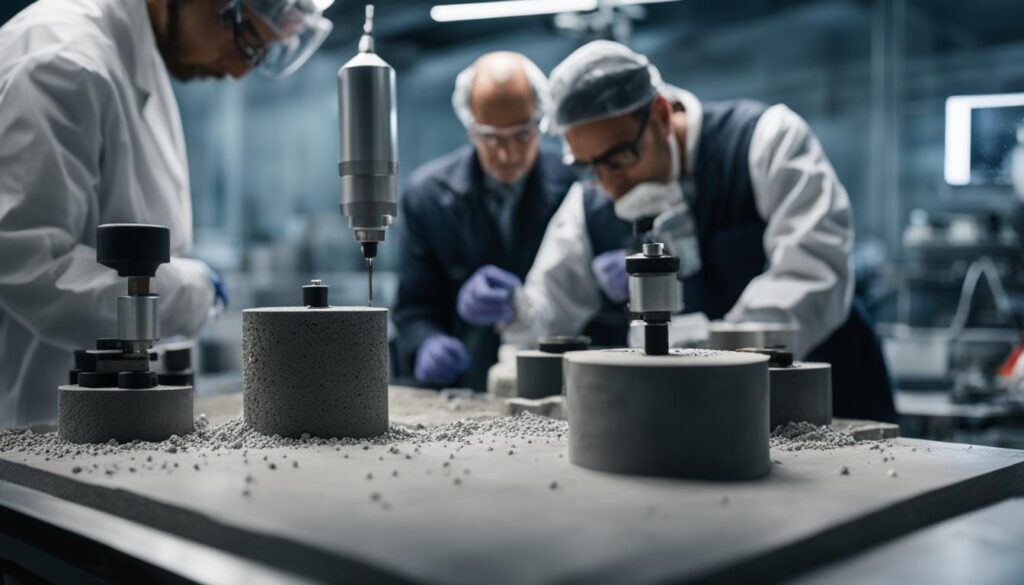
Challenges and Considerations for Self-Healing Concrete
While self-healing concrete shows great promise, there are several challenges that need to be considered in its implementation. These considerations play a crucial role in ensuring the successful adoption and widespread acceptance of this innovative construction material.
Higher Initial Costs
One major challenge is the higher initial costs associated with self-healing concrete compared to traditional concrete. The advanced technology and additional components required for its self-repair capabilities contribute to increased production costs. However, it is important to note that the long-term cost savings resulting from reduced maintenance needs can offset these higher initial costs.
Industry-wide Acceptance and Adoption
Another consideration is the industry-wide acceptance and adoption of self-healing concrete. The construction industry is traditionally conservative, often reluctant to adopt new materials and technologies. Convincing industry professionals of the benefits and reliability of self-healing concrete is crucial for its widespread implementation. Support from industry associations, research institutions, and government bodies will play a vital role in promoting its acceptance.
Establishing Standards and Best Practices
To ensure reliable performance and consistent results, it is essential to establish standards and best practices for the use of self-healing concrete. These standards will guide engineers, architects, and contractors in the proper design, installation, and maintenance of structures using this innovative material. Collaborative efforts between industry stakeholders can help establish these guidelines to maximize the effectiveness of self-healing concrete across various conditions and applications.
Reliable Performance
One critical consideration is the reliable performance of self-healing concrete under different environmental conditions and loads. Extensive testing and research are necessary to evaluate its long-term performance, durability, and structural integrity. This will ensure that self-healing concrete meets the highest standards of reliability and safety, satisfying industry requirements and regulatory guidelines.
“Self-healing concrete must overcome challenges such as higher initial costs and achieving industry-wide acceptance. Additionally, establishing standards and best practices is vital for ensuring reliable performance and maximizing its potential benefits.”
Addressing these challenges and considerations will pave the way for the industry-wide implementation of self-healing concrete. By overcoming these obstacles, the construction industry can unlock the full potential of this revolutionary material, leading to more sustainable, durable, and cost-effective infrastructure.
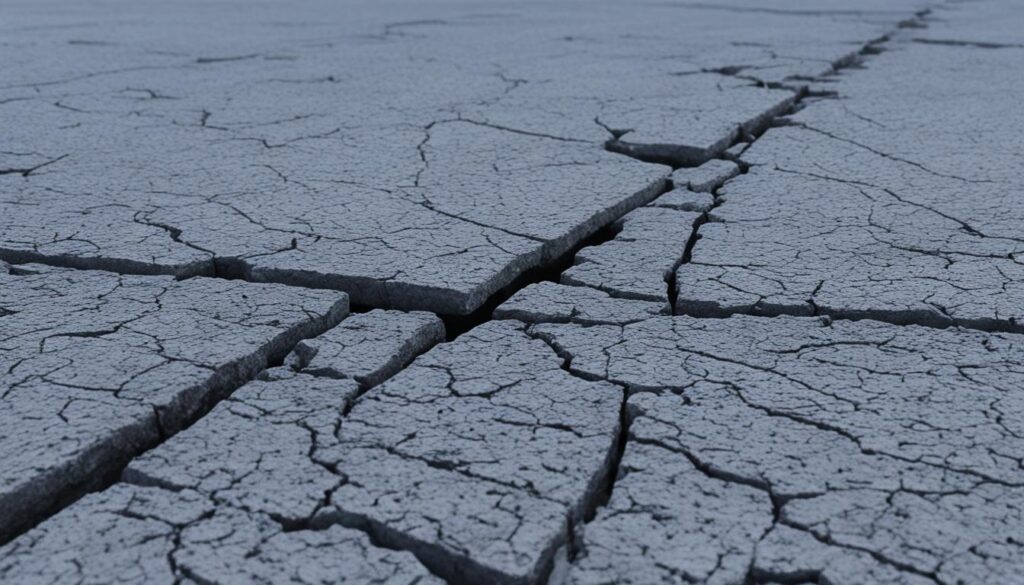
The Future Landscape of Self-Healing Concrete
Self-healing concrete is poised to shape the future of construction. With ongoing research and development efforts, this innovative technology will continue to advance, becoming more efficient and reliable. The future of self-healing concrete holds great promise for sustainable development, creating enduring infrastructure that requires minimal maintenance and has a minimal environmental impact.
As we look ahead, self-healing concrete represents a testament to human ingenuity and a commitment to building a better future. By harnessing the power of this technology, we can revolutionize the construction industry and pave the way for a more sustainable and resilient built environment.
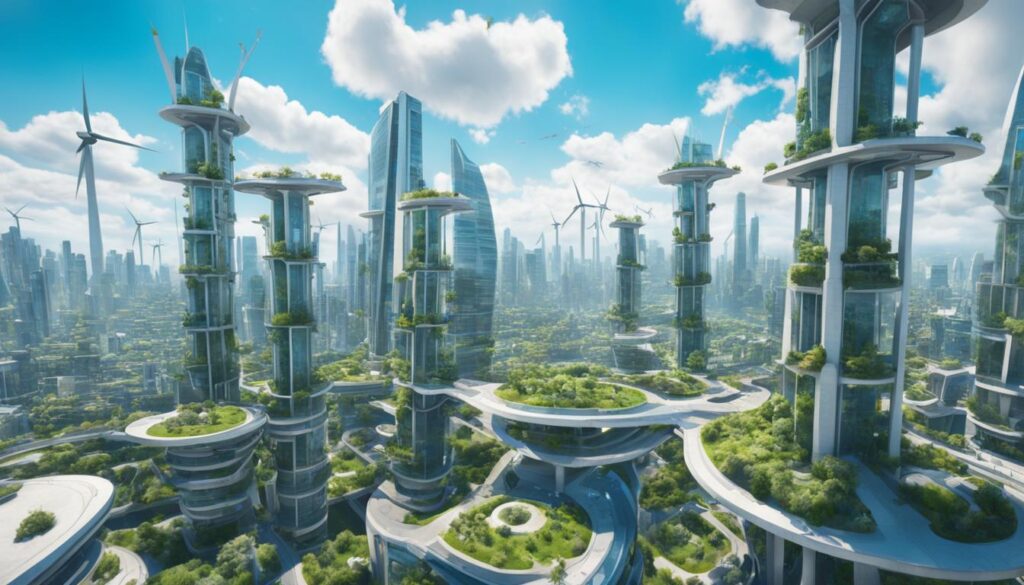
The Environmental Benefits of Self-Healing Concrete
One of the key driving forces behind the future development of self-healing concrete is its potential to contribute to sustainable development. In contrast to traditional concrete, which often requires frequent repairs and has a significant environmental footprint, self-healing concrete offers a more environmentally friendly alternative. The ability to autonomously repair cracks and imperfections means less material waste and reduced carbon emissions associated with constant maintenance and reconstruction.
Furthermore, the enduring infrastructure created by self-healing concrete minimizes the need for resource-intensive maintenance activities, reducing the overall impact on the environment. By promoting longevity and reducing the need for frequent repairs, self-healing concrete aligns with the principles of sustainable development, ensuring the responsible and efficient use of resources for generations to come.
The Role of Innovation in the Future of Self-Healing Concrete
Innovation plays a crucial role in the future development of self-healing concrete. Engineers and scientists are continuously exploring new ways to enhance its performance, durability, and applicability across various construction projects. Advances in materials science, nanotechnology, and bioengineering are revolutionizing the capabilities of self-healing concrete, unlocking its full potential.
One notable area of innovation is the development of self-healing concrete with enhanced healing agent effectiveness and activation mechanisms. Researchers are exploring new types of healing agents, such as polymers, microorganisms, and nanoparticles, to improve the self-healing process and expand its range of applications. Additionally, advancements in sensor technology and artificial intelligence are enabling real-time monitoring and predictive maintenance, further optimizing the performance and efficiency of self-healing concrete.
Collaboration for Enduring Infrastructure
Building the future landscape of self-healing concrete requires collaboration among academic institutions, government agencies, and private companies. By sharing research, knowledge, and resources, these stakeholders can accelerate the development and adoption of self-healing concrete in construction practices.
Collaborative efforts will play a crucial role in establishing standards, best practices, and regulations for the widespread use of self-healing concrete. Through joint initiatives, industry leaders and experts can promote education and awareness, ensuring the successful integration of self-healing concrete into existing infrastructure and future projects.
Investing in the Future
The future development of self-healing concrete relies on continuous investment in research and development. Governments, industry organizations, and funding institutions need to support projects and initiatives aimed at advancing this revolutionary technology.
Investing in the future of self-healing concrete will not only lead to innovative construction practices but also drive economic growth. The adoption of this technology can reduce maintenance costs, increase infrastructure lifespan, and enhance the overall quality of built environments. It presents an opportunity to create jobs, foster industry growth, and position countries at the forefront of sustainable development.
The Way Forward
The future of construction lies in the adoption of sustainable and innovative solutions, and self-healing concrete is at the forefront of this revolution. With its potential to create enduring infrastructure, reduce maintenance needs, and minimize environmental impact, self-healing concrete is shaping a better tomorrow.
By embracing the possibilities that self-healing concrete offers, we can build a resilient and sustainable future, where durable infrastructure stands as a testament to human innovation and our commitment to leaving a positive legacy for future generations.
Advancements in Engineering Self-Healing Concrete
Engineering advancements in self-healing concrete have revolutionized the construction industry. The automatic repair capability of self-healing concrete improves structural integrity and extends the lifespan of structures. This results in reduced maintenance costs over time, making self-healing concrete a cost-effective solution for construction projects.
Self-healing concrete incorporates innovative technologies and materials that enable automatic repair of cracks and imperfections. The integration of healing agents, such as microcapsules or bacterial spores, within the concrete matrix allows for seamless restoration of the material’s integrity.
Self-healing concrete repairs itself, reducing the need for costly manual interventions. It is like having a material that can heal its wounds, ensuring long-lasting durability and enhanced structural performance.
By applying self-healing concrete in construction projects, engineers can achieve several significant benefits. Apart from the extended longevity and improved structural integrity, self-healing concrete reduces the frequency of maintenance activities and associated costs.
The reduced maintenance requirements lead to long-term cost savings for building owners and operators. Instead of spending resources on regular inspections and repairs, they can enjoy a more sustainable and economically efficient solution.
Moreover, the use of self-healing concrete can contribute to the overall sustainability of construction projects. It minimizes the need for resource-intensive repairs and replacements, reducing the environmental impact associated with traditional maintenance practices.
Cutting Costs: How Self-Healing Concrete Saves Money on Structural Maintenance
When it comes to structural maintenance, self-healing concrete offers significant cost-saving benefits. This innovative construction material reduces the need for manual inspections and repairs, resulting in substantial savings for building owners and operators.
Traditional concrete structures require regular maintenance to address cracks and imperfections, which can be time-consuming and costly. With self-healing concrete, however, the repair process is automatic and seamless. Embedded healing agents within the concrete are activated when cracks occur, filling in the gaps and restoring the structural integrity of the material. As a result, the need for frequent, labor-intensive repairs is greatly reduced.
Beyond the immediate cost savings, self-healing concrete also offers long-term economic efficiency. By minimizing the need for ongoing maintenance and repair work, building owners can allocate their resources more effectively and focus on other critical aspects of their operations.
Furthermore, the sustainability aspect of self-healing concrete aligns with the growing demand for environmentally friendly and cost-effective construction materials. Maintenance tasks often involve the use of additional resources and can contribute to carbon emissions. By minimizing the need for repair interventions, self-healing concrete promotes sustainable practices and reduces the environmental impact of construction projects.
Case Study: Cost Savings with Self-Healing Concrete
“Using self-healing concrete in our building projects has resulted in significant cost savings. We have seen a drastic reduction in the need for ongoing repairs and maintenance, allowing us to allocate our budget towards other critical areas. Not only does it save money, but it also ensures the long-term durability of our structures.”
By adopting self-healing concrete, construction companies and building owners can benefit from substantial cost savings while promoting sustainability. This revolutionary material not only reduces the financial burden of structural maintenance but also offers enhanced durability and longevity. With self-healing concrete, the future of construction is both cost-effective and sustainable.
The Future of Self-Healing Concrete
The future prospects of self-healing concrete are incredibly promising. Ongoing research and development efforts are continuously pushing the boundaries of this innovative technology. Scientists and engineers are dedicated to improving healing agents, refining manufacturing processes, and studying the long-term performance of self-healing concrete in real-world conditions.
With each advancement, self-healing concrete is evolving to be more efficient and reliable. The industry’s commitment to research and development ensures that this construction material will continue to revolutionize the way we build.
As self-healing concrete becomes more widely accepted and adopted, the construction industry will experience significant growth. Its numerous benefits, such as enhanced durability, reduced maintenance needs, and increased sustainability, make it an attractive choice for infrastructure projects, building construction, and various industrial applications.
Continuous Growth and Opportunities
The continuous evolution of self-healing concrete opens up exciting opportunities for the industry. Endless possibilities lie ahead as researchers and engineers push the boundaries of what this remarkable material can achieve. With ongoing advancements, self-healing concrete has the potential to transform the construction landscape and drive substantial market growth.
“Self-healing concrete represents the future of construction, enabling us to create enduring infrastructure that requires minimal maintenance and ensures sustainable development.” – Modular Pulse
Pioneering Research and Collaboration
The future of self-healing concrete heavily relies on robust research and collaboration. Leading academic institutions, government agencies, and private companies are working together to scale and refine this technology. The collective efforts of these stakeholders make way for breakthroughs and advancements that will shape the future of the construction industry.
Conclusion
Self-healing concrete is revolutionizing the construction industry by offering sustainable, durable, and innovative solutions for the built environment. With its remarkable ability to autonomously repair cracks and imperfections, self-healing concrete is transforming the way we build. Its benefits extend beyond reduced maintenance needs and enhanced durability to encompass environmental impact and economic efficiency.
From infrastructure projects to building construction, self-healing concrete finds versatile applications that can optimize the lifespan and structural integrity of various structures. As research and development efforts continue, we can expect self-healing concrete to become even more efficient and reliable.
Modular Pulse, your trusted construction technology newsletter, invites you to stay informed about the latest advancements in self-healing concrete and other innovative construction materials. Subscribe for free at modularpulse.com/subscribe to receive regular updates on sustainable construction practices, durability enhancements, and groundbreaking innovations.
FAQ
What is self-healing concrete?
Self-healing concrete is a form of engineered concrete that has the ability to repair its own cracks and imperfections. It incorporates components such as bacterial spores, microfibers, or encapsulated healing agents that react when cracks occur, filling in the gaps and restoring the structural integrity of the concrete.
What are the benefits of self-healing concrete?
Self-healing concrete significantly enhances the durability and longevity of structures, reducing the frequency of required repairs. It also improves safety by autonomously repairing damage that could compromise structural stability. In terms of environmental impact, self-healing concrete reduces the need for new concrete production, leading to a decrease in carbon footprint. Additionally, it provides economic efficiency by reducing maintenance costs and labor-intensive work.
Where can self-healing concrete be used?
Self-healing concrete has a wide range of applications. It can be used in infrastructure projects such as bridges, roads, and tunnels, where it can extend the lifespan of these structures and reduce the need for maintenance. In building construction, self-healing concrete can enhance the safety and longevity of residential and commercial buildings. It is also suitable for coastal defenses, industrial applications, and even military uses where quick and effective repairs are essential.
How is research and development progressing in the field of self-healing concrete?
Scientists and engineers are continuously working to improve the efficiency and reliability of the self-healing process. Collaboration between academic institutions, government agencies, and private companies is essential to scale the technology for practical, widespread application. Investment in research is crucial to further advance self-healing concrete and explore new possibilities for its implementation.
What are the challenges of using self-healing concrete?
One challenge is the higher initial costs compared to traditional concrete. Industry-wide acceptance and adoption of self-healing concrete are also important considerations. Establishing standards and best practices for its use is crucial to ensure reliable performance across different conditions and applications. Addressing these challenges will contribute to the widespread implementation of self-healing concrete.
What does the future hold for self-healing concrete?
The future of self-healing concrete is promising. Ongoing research and development efforts are focused on improving healing agents, manufacturing processes, and studying the long-term performance of self-healing concrete in real-world conditions. With continuous advancements, self-healing concrete has the potential to transform the construction industry and drive market growth.




